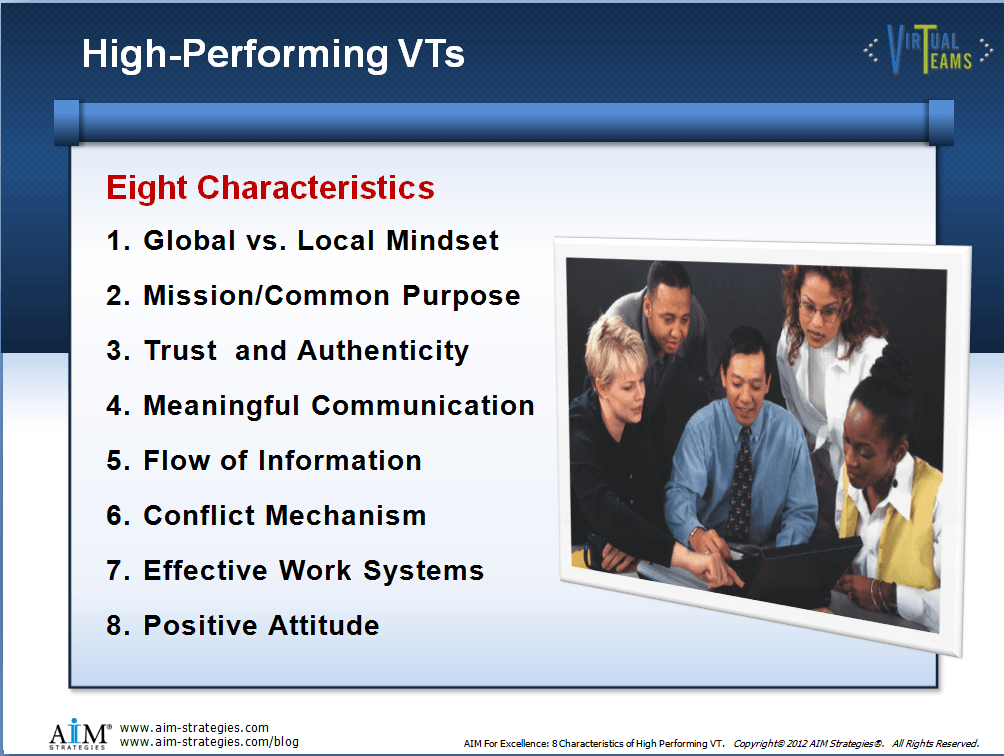Discover This Outline for Virtual Team Processes
Why do some virtual teams function more effectively than others? Can an outline for virtual team processes make a difference? Virtual teams come in many varieties and working with people you never, or rarely see brings new challenges. Throughout my career I have worked with virtual teams from many types of organizations and noticed eight characteristics that emerge in those that are high-performing from which you can create an outline for virtual team processes.
Here they are:
1. Global vs. Local Mindset
Members exhibit a global mindset whether or not they work globally. They look outward, not inward. Effective virtual leaders widen their focus from local to the global, thereby expanding the resource pool across their business.
2. Mission/Common Purpose
Members share responsibility for achieving the mission. High-performing virtual teams have created the conditions where members internalize their piece of the mission, thereby transcending the isolation that defines working in a virtual environment.
3. Trust and Authenticity
A culture of tolerance facilitates trust among team members. Effective virtual managers work to create and maintain an environment of trust to defuse miscommunications. They focus on leadership behaviors, not on personalities, and give people the benefit of the doubt, because they know this engenders trust.
4. Meaningful Communication
Members engage in true communication with each other. They create a shared understanding around context communication, they have access to and utilize technology to their benefit, and they engage in ongoing dialogue. High-performing virtual teams establish and maintain standards on frequency and modes of communication and hold members accountable for acting accordingly.
5. Flow of Information
An easy flow of information exists and is communicated using various technology mediums. Effective global managers have process in place to ensure that all stakeholders are comfortable in asking for what they need, and stating when their needs are not met.
6. Conflict Management Mechanism
A conflict management mechanism is in place to process and monitor virtual conflicts that typically create misunderstanding. Effectively managed global teams have systems to resolve the tensions that arise from legitimate issues, so energy can be used productively, instead of being turned against team members.
7. Effective Work Systems
Work systems are in place to produce deliverables within budgetary and time constraints. High-performing teams have figured out how operational nuts and bolts fit together to get deliverables out the door as efficiently and cost-effectively as possible.
8. Positive Attitude
Team members have a positive attitude that spans time and distance challenges. Members of high-functioning virtual teams assume their efforts will lead to success.
Regardless of location, industry or level, this outline for virtual team processes for high performing virtual teams influences results. Although it would be next to impossible to assemble virtual teams that perform perfectly across all eight categories, successful virtual teams work on creating systems and behaving consistently around them.
To learn more about the eight characteristics of high performing virtual teams and create your own outline for virtual team processes for remote team success, here is a recent article at FORBES.




